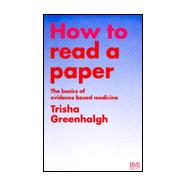
| Foreword | xi | ||||
|
|||||
| Preface: Do you need to read this book? | xv | ||||
| Acknowledgements | xvii | ||||
|
1 | (12) | |||
|
1 | (2) | |||
|
3 | (5) | |||
|
8 | (5) | |||
|
13 | (21) | |||
|
13 | (1) | |||
|
14 | (20) | |||
|
15 | (5) | |||
|
20 | (2) | |||
|
22 | (3) | |||
|
25 | (1) | |||
|
26 | (3) | |||
|
29 | (1) | |||
|
29 | (1) | |||
|
30 | (4) | |||
|
34 | (19) | |||
|
34 | (2) | |||
|
36 | (5) | |||
|
41 | (4) | |||
|
45 | (1) | |||
|
46 | (1) | |||
|
47 | (1) | |||
|
48 | (1) | |||
|
48 | (1) | |||
|
49 | (4) | |||
|
53 | (16) | |||
|
53 | (1) | |||
|
54 | (2) | |||
|
56 | (2) | |||
|
58 | (4) | |||
|
62 | (1) | |||
|
63 | (3) | |||
|
66 | (3) | |||
|
69 | (18) | |||
|
69 | (2) | |||
|
71 | (5) | |||
|
76 | (2) | |||
|
78 | (2) | |||
|
80 | (3) | |||
|
83 | (2) | |||
|
85 | (2) | |||
|
87 | (10) | |||
|
87 | (2) | |||
|
89 | (1) | |||
|
90 | (4) | |||
|
94 | (3) | |||
|
97 | (14) | |||
|
97 | (1) | |||
|
98 | (4) | |||
|
102 | (6) | |||
|
108 | (3) | |||
|
111 | (17) | |||
|
111 | (3) | |||
|
114 | (5) | |||
|
119 | (4) | |||
|
123 | (5) | |||
|
128 | (10) | |||
|
128 | (2) | |||
|
130 | (2) | |||
|
132 | (6) | |||
|
138 | (13) | |||
|
138 | (2) | |||
|
140 | (5) | |||
|
145 | (4) | |||
|
149 | (2) | |||
|
151 | (12) | |||
|
151 | (4) | |||
|
155 | (6) | |||
|
161 | (2) | |||
|
163 | (14) | |||
|
163 | (3) | |||
|
166 | (3) | |||
|
169 | (2) | |||
|
171 | (1) | |||
|
172 | (5) | |||
| Appendix A: Checklists for finding, appraising, and implementing evidence | 177 | (10) | |||
| Appendix B: Evidence based quality filters for everyday use | 187 | (2) | |||
| Appendix C: Maximally sensitive search strings for research use (to be used mainly for research) | 189 | (2) | |||
| Appendix D: Assessing the effects of an intervention | 191 | (1) | |||
| Index | 192 |
The New copy of this book will include any supplemental materials advertised. Please check the title of the book to determine if it should include any access cards, study guides, lab manuals, CDs, etc.
The Used, Rental and eBook copies of this book are not guaranteed to include any supplemental materials. Typically, only the book itself is included. This is true even if the title states it includes any access cards, study guides, lab manuals, CDs, etc.